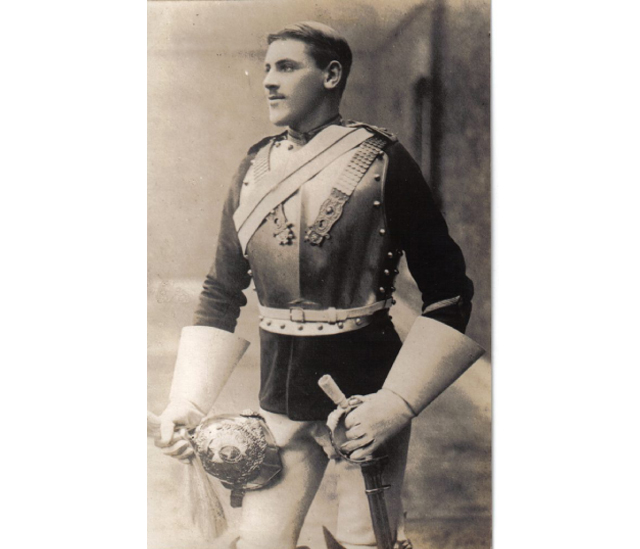Harry Streeter joined the army in the years before the First World War and later gave his life for his country.
Harry Streeter was born the son of Alfred Samuel and Harriet Streeter in Newick, East Sussex on 10 January, 1884. He was brought up in Newick, attending school there and becoming a baker.
At the age of 18, in 1901, he enlisted for 12 years’ service with the 1st Life Guards of the Household Cavalry, based out of Windsor. After just 8 years of home service, in 1909, he transferred to the Army Reserve, but re-joined the 1st Life Guards in August 1914 at the start of the 1st World War.
He was sent to France in October of that year as part of the British Expeditionary Force, in C Squadron, 1st Life Guards.
On 30 October 1914, the Regiment was in the trenches at Zanvoorde, and the Regiment’s War Diary describes what happened:
6 a.m. – Heavy bombardment of position opened. At 7.30 a.m. position was attacked by large force of infantry. This attack proved successful owing to greatly superior numbers. Regiment retired in good order about 10 a.m. except C Squadron on left flank from which only about ten men got back. Remainder of Squadron missing.
Nearly 300 men from the Household Cavalry were killed in the battle: C Squadron were overrun.
He was initially listed as ‘missing’. His family was told by a Trooper from A Squadron of the 1st Life Guards that he may have been wounded and taken prisoner at Zanvoorde, and they asked the International Committee of the Red Cross whether they had an information on his as a Prisoner of War.
On 3 January 1916, he was officially recorded by his Regiment as having been killed.
His death is commemorated on the Ypres (Menin Gate) Memorial, the Household Cavalry Memorial at Zanvoorde, and on the memorial plaque at St Mary’s Church, Newick.
This story was submitted by Robert Streeter








